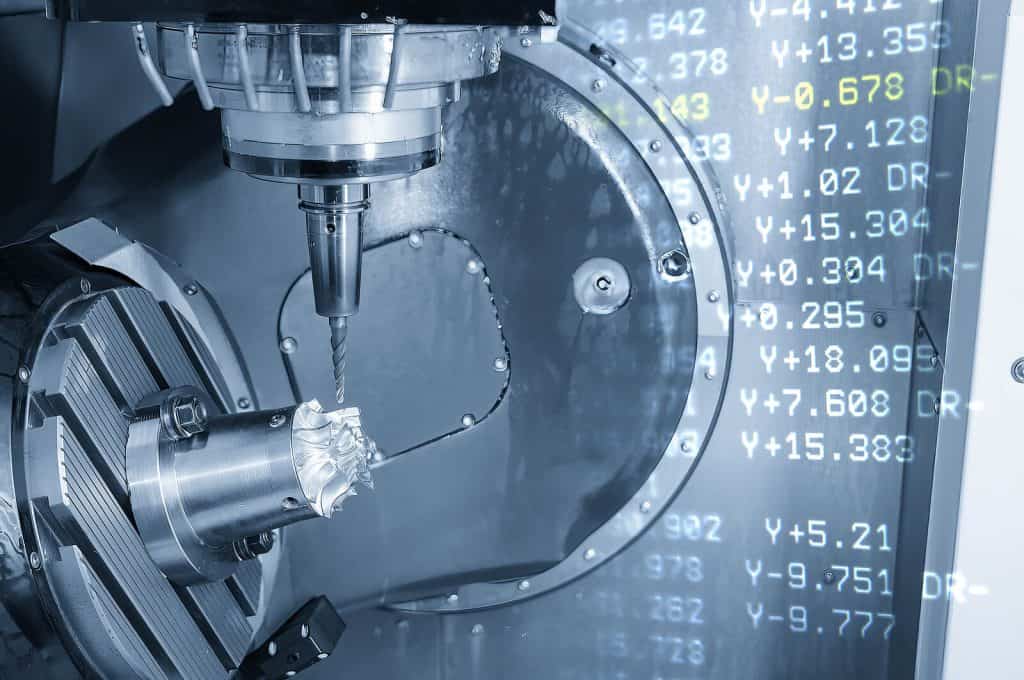Worldwide spending on digital transformation strategies is estimated to reach $3.4 trillion by 2026, according to research from Statista. Historically, manufacturing has been slow to capitalize on such trends, but that’s changing quickly.
Table of Contents
ToggleAdditional research from Mordor Intelligence predicts a19.4% annual growth rate for digital technological spending in manufacturing between 2022 and 2027. One of the highlights — spending on collaborative robots — is likely to reach $12.3 billion by 2025, with technologies like 3D printing and IoT (Internet of Things) following closely.
These are just two examples of technologies manufacturing is rolling out at scale to close its digital transformation gap.
Next-Generation Connectivity and Remote Sensing
The Manufacturing Institute is another group studying the positive impacts of digital transformation on manufacturers of all sizes. One major takeaway from their recent industry survey is 91% of decision-makers in manufacturing believe 5G is an integral part of their company’s future.
Why is next-generation connectivity essential for closing the digital transformation gap in manufacturing? Here are just three reasons cited by industry leaders in the Manufacturing Institute survey:
- Speed and competitiveness: Nine in 10 surveyed manufacturing representatives expect 5G’s higher speeds will improve their group’s competitiveness in the global economy.
- Remote access: The COVID-19 pandemic spurred many manufacturers to invest in remote-access and remote-troubleshooting technologies. 5G makes it fast and easy to oversee cyber-physical systems with fewer or zero people on the premises.
- New business opportunities: Some 86% of leaders believe the adoption of 5G will enable their organization to create new business ventures and new services and bring about new and improved industrial processes.
One electrical transformer manufacturer in Mexico successfully implemented a seamless process foradministering factory acceptance tests remotely. In another example, John Deere is experimenting with a private 5G spectrum for its assembly plants. The goal is to create a blazing-fast network of sensors, connected machines and enterprise-planning software and a cohesive,efficient pipeline of data and materials throughout the company.
Artificial Intelligence and Social Listening
The manufacturing sector is under pressure from supply chain disruptions, labor disputes, climate change and other factors. Any place it can deploy technology wisely to reduce friction and time-to-market is a worthy place for a strategic investment.
A cosmetics company called Lubrizol showed combining artificial intelligence and “social listening” on social media websites results in faster product development and more satisfied customers. The business used an AI model that helped them comb social media posts for common denominators in what customers wanted from its products. The AI then helped the company develop workable formulations based on those observations — like prioritizing “long-lasting” and “moisturizing” formulas.
Failed product launches are a tremendous waste of effort, time and materials in manufacturing. Finding technology that makes it easy to give people what they want in an appealing format could save many of those otherwise wasted resources.
Machine Vision and Reverse Logistics
Reverse logistics remains one of the biggest challenges and sources of waste throughout the manufacturing, distribution and logistics sectors. Thankfully, digital transformation technologies are making product returns less likely to occur and faster to carry out when necessary.
Machine vision is one such technology. This tech combines lighting, multiple cameras or sensors and deep-learning models to provide a detailed, automatable process for inspecting products for defects and overall quality and scalability.
Researchers observe that deep-learning modelsmay take time to train effectively, but once they do, they provide impressive accuracy in defect detection that’s superior to the naked eye. More widespread rollouts of machine vision inspection should result in far fewer defective products making their way to end users. It’s even an ally in ongoing efforts tofind and eliminate counterfeit products from supply chains.
To make the most of your digital transformation, create an in-house talent development program to keep your momentum going. There’s an intense race among manufacturers to capture the best tech talent before competitors. Be sure your organization has resources available to up-skill, re-skill, cross-train and overall invest in your employees to keep their skills relevant.
3D Printing, Mass Customization and Rapid Prototyping
3D printing is helping manufacturers tackle the problem of reverse logistics in different ways. The first is through rapid prototyping and faster product iterations before reaching the market. Newer printers can be 100 times faster than previous-generation models. Combined with social listening and surveys, manufacturers can give customers exactly what they want the first time — and more quickly — compared to longer development times for products that aren’t guaranteed to satisfy.
Manufacturers have been working for years to explore 3D printing’s capability to support mass customization, as well. The idea seems like a contradiction, but additive manufacturing makes it far simpler than it ever was. Compared to the long turnaround required to rework a conventional manufacturing line to make a different product, it’s easy to enter another program into a 3D printer and swap out the printer filament. Researchpoints to profitable returns for manufacturers that adopt a hybrid approach that incorporates both conventional and additive manufacturing techniques.
How to Make the Most of a Digital Transformation
There’s a temptation to not “fix” something that’s not “broken,” but you may not know what’s not working efficiently until you ask. Convene a team of leaders from each department to identify growth areas and steer conscientious tech-budget decisions.
Digital transformations are advancing full-steam ahead in every industry — including ones previously known for being slow to change. This is your chance to level up, so what will you do with it?




